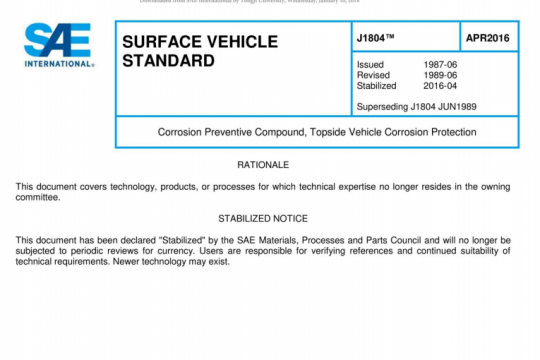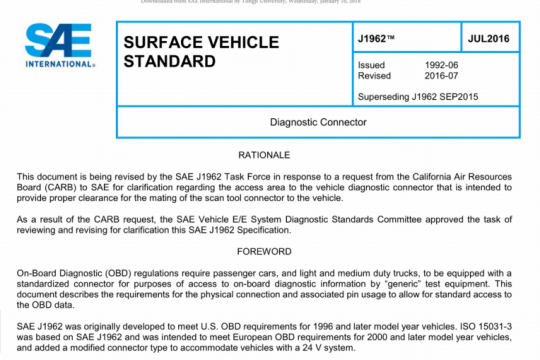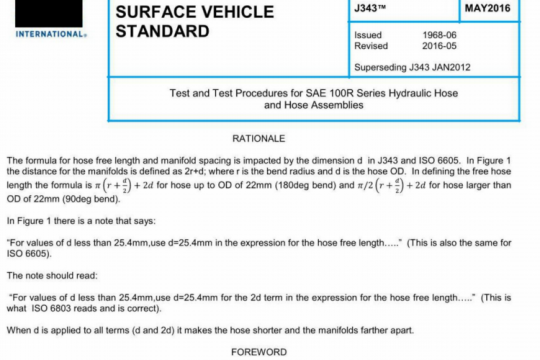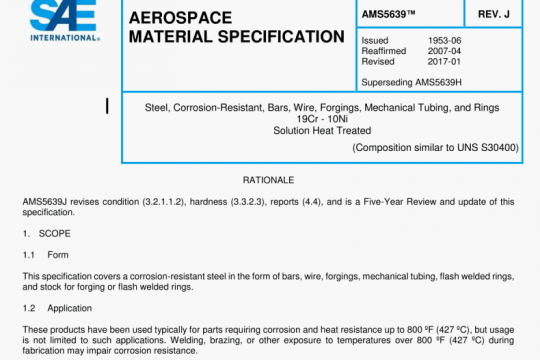SAE J1400:2017 pdf free
SAE J1400:2017 pdf free.Laboratory Measurement of the Airborne Sound Barrier Performance of Flat Materials and Assemblies
This SAE Recommended Practice presents a test procedure for determining the airborne sound insulation performance of materials and composite layers of materials commonly found in mobility, industrial and commercial products under conditions of representative size and sound incidence So as to allow better correlation with in-use sound insulator performance. The frequency range of interest is typically 100 to 8000 Hz 1/3 octave-band center frequencies.
This test method is designed for testing flat samples with uniform cross section, although in some applications the methodology can be extended to evaluate formed parts, pass-throughs, or other assemblies to determine their acoustical properties. For non-flat parts or assemblies where transmitted sound varies strongly across the test sample surface, a more appropriate methodology would be ASTM E90 (with a reverberant receiving chamber) or ASTM E2249 (intensity method with an anechoic or hemi-anechoic receiving chamber).
To qualify a test chamber once it has been built or whenever changes are made to the chamber which may affect diffusion,it is recommended that the population standard deviation of twenty randomly located sound pressure measurements in the source room be no more than 2 dB at the 1/3-octave center frequency which is one octave higher than the low frequency cutoff and above (for example, 200 Hz and above for a room with 100 Hz low frequency cutoff), with a representative test sample mounted in the test window. Microphones should be spaced at least 1/4-wavelength from each other, from diffusers and from any room boundaries at the lowest measurement frequency. Diffusion in the reverberation source room can be enhanced by the use of rotating or stationary diffusers. Note that excessively large reverberant source rooms may not exhibit diffuse field characteristics at high frequencies due to air absorption. See Section 7 of ASTM C423 for guidance on reverberation room design. See Annex A3 and Appendix X1 of ASTM C423 regarding room qualification and the use of diffusers to reduce the variability of sound pressure levels within the source room. See 4.9 regarding proper location and orientation of source room speaker(s). NOTE: ASTM C423 and ASTM E90 procedures specify 5000 Hz as the highest 1/3-octave band. In order to measure accurately at higher frequencies, diffusion at these higher frequencies must be adequate. It is reasonable to extend the 5000 Hz values in Table A3.1 of ASTM C423 to higher frequencies for the purposes of room qualification. Ambient conditions (temperature and relative humidity) in the source room must be controlled to minimize air absorption – see Section 6 of ASTM C423 and ANSI S1.26.SAE J1400 pdf free download.




